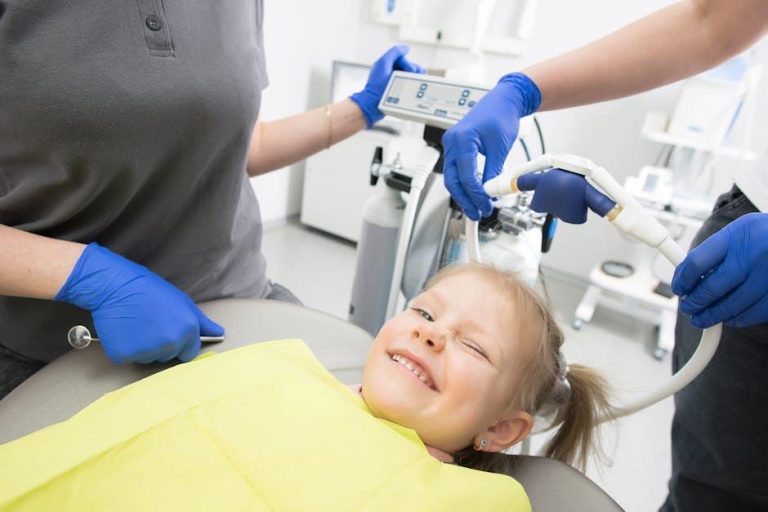1 in 3 Kids Has Dental Problems, Poll Finds – U.S. News & World Report
A recent poll conducted by U.S. News & World Report reveals a startling reality: 1 in 3 children in the United States suffer from dental problems. This statistic shines a spotlight on a growing public health concern that demands immediate attention from parents, educators, and healthcare providers alike.
Dental issues in children can affect not just their oral health but also their overall well-being, self-esteem, and academic performance. In this comprehensive article, we delve into the causes, consequences, and essential strategies to help protect your child’s dental health. Whether you’re a concerned parent or a caregiver, understanding the scope and solutions of this issue is critical.
Why Are Dental Problems So Prevalent Among Kids?
Dental problems in children encompass a range of issues such as cavities, gum disease, tooth decay, and oral infections. According to the poll findings, approximately 33% of kids reported having at least one dental issue. The primary factors contributing to this high rate include:
- Poor Oral Hygiene: Many children lack the right brushing and flossing habits, leading to plaque buildup.
- Sugary Diets: High consumption of sugary snacks and drinks accelerates tooth decay.
- Limited Access to Dental Care: Socioeconomic disparities often prevent timely dental visits.
- Lack of Awareness: Both parents and children might underestimate the importance of regular dental checkups.
- Fear of Dentists: Dental anxiety causes many families to delay or avoid appointments.
Common Dental Issues Affecting Children
| Dental Problem | Description | Typical Symptoms |
|---|---|---|
| Cavities (Tooth Decay) | Permanent damage to the tooth enamel caused by acid-producing bacteria. | Toothache, visible holes, sensitivity to hot or cold foods. |
| Gingivitis | Inflammation of the gums caused by plaque buildup. | Red, swollen, or bleeding gums. |
| Early Childhood Caries | Severe decay in baby teeth, often due to prolonged bottle-feeding. | Pain, discoloration, difficulty eating. |
| Dental Trauma | Physical injuries to the teeth from accidents or sports. | Chipped or broken teeth, pain, swelling. |
The Impact of Dental Problems on Kids’ Lives
Ignoring dental issues in children can have far-reaching effects beyond just oral discomfort. Some of the consequences include:
- Poor Academic Performance: Dental pain and infections can distract children, causing them to miss school or underperform.
- Speech and Eating Difficulties: Dental problems can interfere with chewing or pronunciation development.
- Low Self-esteem: Visible dental issues may cause embarrassment and affect social interactions.
- Long-term Oral Health Risks: Early dental problems often lead to costly and complex procedures later in life.
Practical Tips for Parents to Prevent Dental Problems
Thankfully, dental diseases in children are highly preventable with consistent habits and proper care. Here are actionable steps parents can take to safeguard their kids’ smiles:
- Establish a Daily Oral Hygiene Routine: Encourage brushing twice daily with fluoride toothpaste and flossing once daily.
- Limit Sugary Foods and Drinks: Replace candy and soda with fresh fruits, vegetables, and water.
- Schedule Regular Dental Checkups: Visit the dentist at least twice a year for cleanings and early detection.
- Use Fluoride Treatments: Talk to your dentist about fluoride varnishes or supplements to strengthen tooth enamel.
- Make Dental Visits Fun and Comfortable: Use positive reinforcement and explain procedures using kid-friendly language.
- Promote Protective Gear: Use mouthguards during sports to prevent dental trauma.
Case Study: Turning Oral Health Around for Little Emma
Emma, a 7-year-old, struggled with frequent cavities and gum sensitivity. Her parents discovered her problem after noticing she hesitated to eat and complained of tooth pain. Following a comprehensive dental exam, Emma began a personalized oral care plan:
- Twice-daily supervised brushing with a fluoride toothpaste
- Healthier snacking habits, cutting down on sweets
- Regular dental cleanings and a fluoride treatment schedule
- Positive reinforcement for consistent flossing
Within six months, Emma’s dental health improved dramatically, and her confidence soared. Her experience highlights the power of early intervention and parental involvement in managing children’s oral health.
Firsthand Experience: Pediatric Dentist’s Insight
Dr. Lisa Montgomery, a pediatric dentist based in Chicago, emphasizes the importance of early education:
“Dental problems in kids are often preventable, but the challenge lies in creating habits early on. Parents need to understand that brushing alone isn’t enough; diet, regular dental visits, and emotional reassurance play vital roles.”
She also recommends incorporating fun activities such as brushing songs, charts, and rewards systems to motivate children to maintain oral hygiene regularly.
Summary Table: Key Indicators to Watch in Children’s Dental Health
| Symptom | Possible Cause | Recommended Action |
|---|---|---|
| Persistent Toothache | Cavities or infections | Visit a dentist immediately |
| Bleeding Gums | Gingivitis or poor hygiene | Improve brushing, dental checkup |
| Visible Tooth Holes | Cavities | Dental filling treatment |
| Reluctance to Eat Certain Foods | Dental pain or sensitivity | Consult dentist, check for decay |
Conclusion: Prioritize Your Child’s Dental Health Today
The alarming statistic that 1 in 3 kids suffers from dental problems should serve as a wake-up call for all families and communities. Dental health is an essential piece of your child’s overall wellness puzzle. Early detection, prevention, and creating positive habits can dramatically reduce the risk and consequences of dental diseases.
By embracing the tips and insights shared in this article, you can help your child develop a healthy smile that lasts a lifetime. Remember — healthy teeth mean happy kids!


